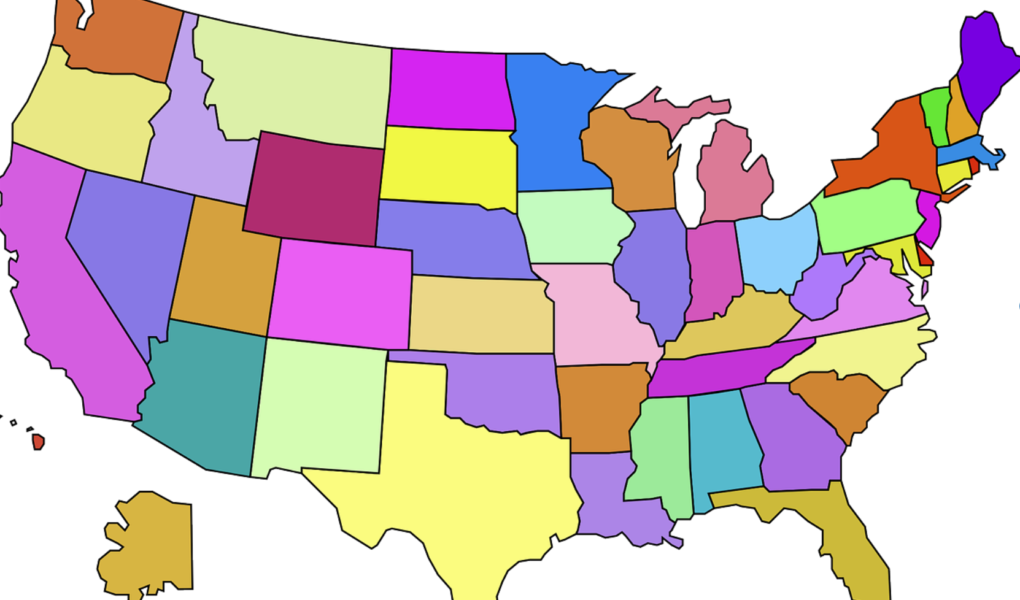Every year, Americans are on the move, searching for new places to live and work in. Often, Americans relocate to states with lower tax burdens, lower costs of living, and warmer climates.
Interstate migrants in the United States are an extremely diverse group of people that include everyone from young professionals seeking new job opportunities to elderly retirees searching for a place where they can enjoy their golden years.
More recently during the COVID-19 pandemic, states with fewer restrictions on personal liberty saw large population gains as people flocked to these states in search of freedom and opportunity. The rise of remote work during the pandemic—which will likely continue even as the pandemic subsides—will also encourage people to move across state lines, especially to more affordable locations.
But regardless of their reasons for crossing state lines in search of somewhere else to live, these migrants will continue to shape the face of the nation for years to come. In particular, states in the South and the Mountain West—like Arizona, Florida, Texas, and others—will keep growing in population as they attract interstate migrants seeking lower taxes, greater affordability, good weather, and a business-friendly atmosphere.
Florida
Total inbound rate: 55.8% (i.e., for every 1,000 people who move across Florida’s state boundaries, 558 people move into the state, and 442 people move out of the state)
Total outbound rate: 44.2%
Notable metro areas: Fort Lauderdale, Jacksonville, Miami, Orlando, Tampa-St. Petersburg-Clearwater
Throughout the start of the 21st century, Florida has been a top relocation destination for interstate migrants. Over 300,000 people move to Florida every year, and thanks to this migration, the Sunshine State gained $200 billion worth of economic activity from the other 49 states in the Union between 2000 and 2022.
Low taxes, including the complete absence of a personal income tax, have made Florida very friendly to businesses and high-income individuals. Affluent people from high-tax states like New York and New Jersey have flocked to Florida, while the aviation, cleantech, and healthcare industries have created countless jobs and attracted a plethora of interstate migrants seeking to improve their career opportunities.
More recently, Florida has become an even more attractive relocation destination due to its lax response to the COVID-19 pandemic. The state government of Florida ended all lockdowns, business closures, and mask mandates in September 2020. This prompted many residents of California, New York, and other states notorious for harsh pandemic-related restrictions to flee to Florida in search of personal freedom. And the new pandemic-era migrants to Florida show no sign of leaving the Sunshine State given its vast economic and lifestyle opportunities.
Texas
Total inbound rate: 57.0%
Total outbound rate: 43.0%
Notable metro areas: Austin-San Marcos, Dallas, Fort Worth, Houston, San Antonio
Like Florida, economic factors are one of several reasons why so many out-of-state residents are moving to Texas. The state of Texas lacks an income tax, letting middle-income earners save $2,000 to $6,000 on taxes every year. Texas is also known for its low costs of living, which are 8% below the national average.
Housing affordability is another major reason why many people—especially people from California and other states plagued by high-priced housing—have relocated to Texas: As of January 2023, the median sales price for a home in Texas is about $336,600, which is $46,900 less expensive than the nationwide median sales price of $383,500—and less than half of California’s median sales price of $696,600.
The rapidly growing job opportunities in Texas have also contributed to the influx of out-of-state residents. Texas is home to oil companies like ExxonMobil, Phillips 66, and Valero Energy. Tech giants like Amazon, Apple, AT&T, Facebook, Google, and Intel have all established a presence in Texas, while Elon Musk famously relocated Tesla and all its operations to Texas in 2021.
The weather in Texas is also very appealing. Residents of Texas can enjoy almost 300 days of sunshine, especially in the southern and eastern regions of the state.
Tennessee
Total inbound rate: 61.5%
Total outbound rate: 38.5%
Notable metro areas: Chattanooga, Knoxville, Memphis, Nashville
As a rising economic powerhouse, Tennessee has established itself as one of the nation’s leading job creators. Major companies like Dollar General and HCA Healthcare are headquartered in Tennessee, contributing to the rapid job growth in the state.
Nashville specifically has had one of the hottest job markets for the past few years, with tech companies like Amazon making large investments to create thousands of jobs in the city. The broader Grand Division of Middle Tennessee, which includes the city of Nashville, has also seen a major growth spurt in tech jobs, with the number of technology-related occupations increasing by 51% between 2015 and 2020.
Tennessee is also known for its low costs of living. The state has no personal income tax, allowing residents to keep a greater share of their wages and salaries. Everyday goods and services are also much less expensive in Tennessee, with overall costs of living in the state being 10.1% lower than the national average. Housing is especially affordable in Tennessee, where median home prices are 20.6% below nationwide levels.
Tennessee also has a very vibrant cultural scenery. Nashville is renowned for its thriving music industry, and it is no wonder why so many famous singers from Aretha Franklin to Dolly Parton to Justin Timberlake have all hailed from Nashville. Further east, the Great Smoky Mountains National Park is a major tourist destination that attracts about 14 million travelers every year, making it the second-most-visited park in the United States. The park is an excellent vacation spot for tourists who wish to enjoy the natural beauty of the Appalachian Mountains.
North Carolina
Total inbound rate: 62.1%
Total outbound rate: 37.9%
Notable metro areas: Asheville, Charlotte-Gastonia, Greensboro-Winston-Salem, Raleigh-Durham-Chapel Hill
Education is a major pull factor for interstate migrants moving to North Carolina. The Tar Heel State is home to prestigious institutions of higher education, including top private universities like Duke and Wake-Forest; renowned public institutions like North Carolina State University and the University of North Carolina at Chapel Hill; and liberal arts schools like Davidson College. The robust higher education system in North Carolina is a driving force behind the state’s growing technology industry.
The booming economy of North Carolina, enabled by the state’s business-friendly climate, is another reason for North Carolina’s rapid population growth. In 2022, CNBC rated North Carolina as the number-one state in the Union for entrepreneurs. Large corporations like the American tech giant Apple and the Vietnamese car manufacturer VinFast have collectively invested billions of dollars in the state. These investments are expected to create tens of thousands of jobs and contribute to economic growth in the state.
Residents and newcomers in North Carolina have benefited from widespread tax relief and a low cost of living. Throughout the 2010s, the sales and income tax rates were both reduced, while the lowest income tax bracket of 0% was raised, allowing 1.5 million low-income North Carolinians to be entirely exempt from the personal income tax. Goods and services in North Carolina are also relatively inexpensive. Housing and transportation are especially affordable, as their costs are more than 16% lower than the national average.
North Carolina is also known for its temperate weather, natural beauty, and diverse topography. The western regions of the state are known from their mountainous Appalachian terrain, while the eastern portions of North Carolina are home to marvelous beaches. Warm, sunny summers in North Carolina allow for swimming, hiking, and other fun outdoor activities.
In addition, North Carolina is known for its delicious cuisine. Country-fried chicken, slow-roasted pork, Atlantic Beach pie are examples of tasty Southern dishes commonly served in the state.
South Carolina
Total inbound rate: 63.7%
Total outbound rate: 36.3%
Notable metro areas: Charleston, Columbia, Greenville-Spartanburg, Sumter
Job creation is a major reason why many out-of-state residents are relocating to South Carolina. With its thriving job market, South Carolina is witnessing very rapid job growth, especially in the leisure, hospitality, transportation, utilities, manufacturing, and finance industries. Wages are also improving in South Carolina, with manufacturing workers enjoying a 16.7% wage increase in 2022.
Low living costs also make South Carolina a popular destination for interstate migrants. The overall cost of living in South Carolina is about 11% lower than the national average; housing and transportation, whose costs are 23% and 13% below the national average respectively, are especially affordable.
The climate and natural environment of South Carolina also make it a top relocation destination. The weather is warm for most of the year, allowing residents to exercise or take a hike outdoors. If the Sun is very hot outside, it is always possible to cool down by taking a relaxing trip to the beach, as the state has about 2,800 miles (4,500 kilometers) of coastline.
Arizona
Total inbound rate: 64.5%
Total outbound rate: 35.5%
Notable metro areas: Flagstaff, Phoenix-Mesa, Tucson
Low taxes are a major reason why Arizona has been able to attract plenty of out-of-state residents. Marginal state income tax rates are just 4.5% in Arizona, much lower than those in California (13.3%), Oregon (9.9%), and other high-tax states whose residents often relocate to Arizona.
Affordable real estate is another pull factor for interstate migrants moving to Arizona. The Grand Canyon State boasts the lowest median price per acre for land designated as a homesite, making it affordable for Arizonans to buy land and then build a home on it. People who wish to purchase rather than build their homes can also enjoy Arizona’s affordable housing. As of January 2023, the median price for a home in Arizona is about $406,800, which is more than 40% lower than the median home prices in California ($696,600), and more than 25% below the median prices in Washington ($553,500), and Colorado ($546,000).
Arizona is also known for its family-friendly education policy. For decades, the state has pioneered school choice reforms aimed at improving academic performance among disabled, low-income, and orphaned children. More recently, in 2022, the state government of Arizona created a universal educational savings account that lets any family redirect its children’s education dollars to any school or program they like.
Interstate migration will continue to redefine the United States socially, culturally, and economically. Americans will likely continue to search for freedom and opportunity as they move across state lines, flocking to states with lower taxes, strong job growth, and low costs of living.
Low-tax, low-regulation states in the South and the Mountain West will continue to be engines of economic growth. For example, South Carolina will continue to experience double-digit job growth in the 2020s.
Overall, the United States will see a demographic shift from big cities in California (e.g., San Francisco, Los Angeles) and the Northeast (e.g., New York City, Boston) to small-to-midsize cities in the South and the Southwest (e.g., Frisco, Texas; Franklin, Tennessee; Charleston, South Carolina; Orlando, Florida).




